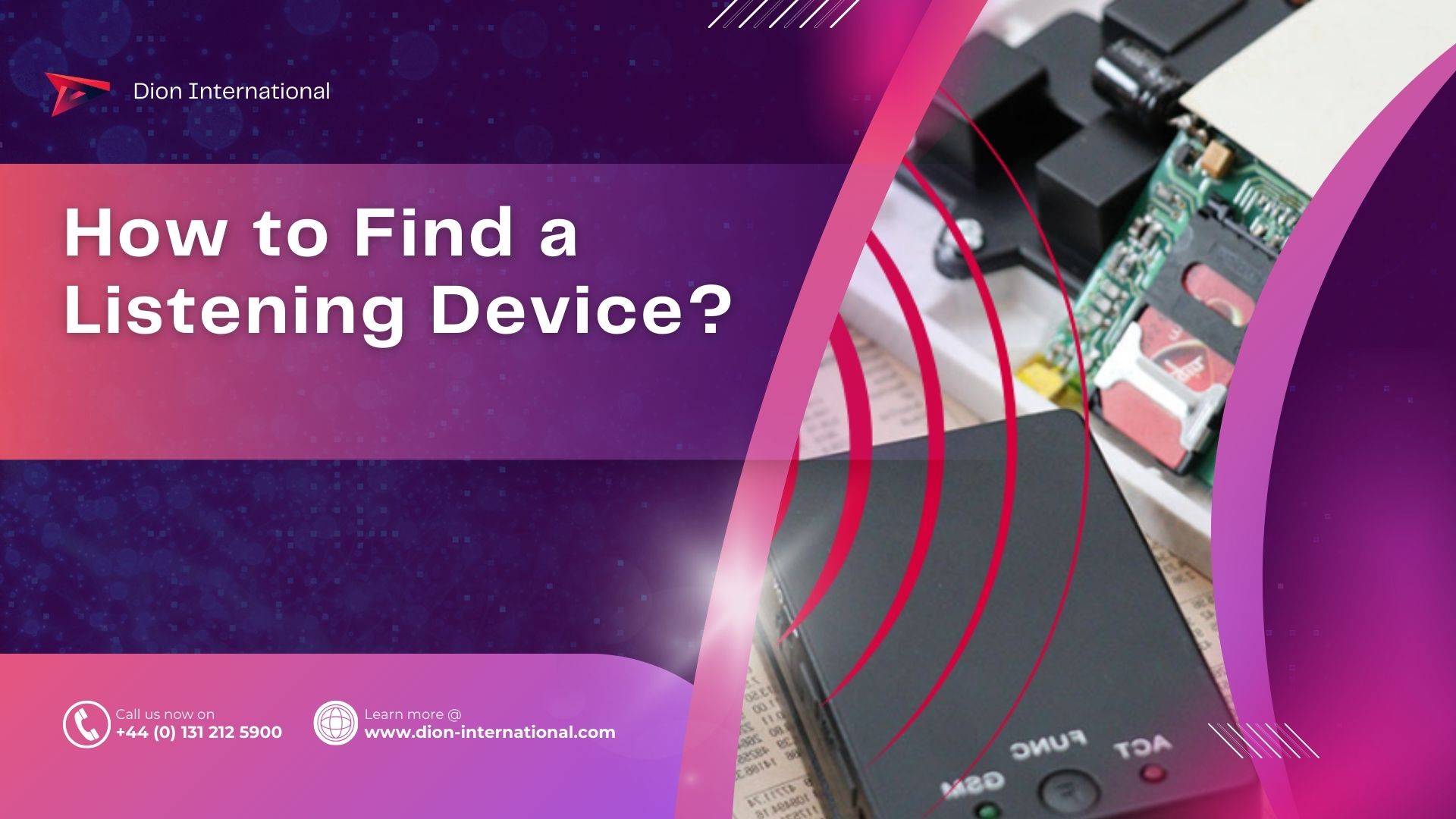How to Find a Listening Device: A Guide for Private Clients and Businesses
With advancements in technology, listening devices have become more discreet and accessible, posing serious privacy risks for individuals and businesses alike. Whether you suspect someone has placed a bug in your home, vehicle, or office, knowing how to detect and remove these devices is essential for safeguarding your privacy. This guide will essentially walk you through how to conduct your own bug sweep, the different types of listening devices, how to find them, and what steps to take if you discover one.
Common Types of Listening Devices:
Audio Bugs
These small microphones transmit conversations via radio frequencies, GSM, or Bluetooth. They can be concealed in furniture, electrical outlets, or everyday objects like pens and clocks.
Wired Microphones
Wired bugs are directly connected to a recording device. They are harder to detect as they don’t emit radio signals but are limited in placement due to wiring constraints.
Wireless Microphones
These transmit conversations in real-time and are often hidden in inconspicuous items such as smoke detectors or lamps.
Phone Wiretaps
These are used to intercept phone calls and are either physically installed on a landline or hacked into mobile phone systems.
Vehicle Bugs
Listening devices in vehicles can be hidden in dashboards, seats, or other compartments, often transmitting audio remotely.
Hidden Cameras with Audio
Some surveillance cameras also have built-in microphones, allowing both video and audio recording.
How to Detect a Listening Device in Your Home
- Conduct a Physical Inspection – Check unusual objects, furniture, and appliances for any tampering or unfamiliar devices.
- Look for Unusual Wiring or Small Holes – Bugs may be hidden in wall outlets, smoke detectors, or lampshades.
- Turn Off All Noise Sources – Listen for faint buzzing, clicking, or interference sounds, which could indicate an active device.
- Use a Flashlight – Shine a flashlight at different angles to look for small reflections that might indicate a hidden camera lens.
- Check Electrical Outlets and Phone Jacks – Bugs are often installed in these locations to draw power or tap into phone lines.
- Use a Bug Detector – RF detectors can pick up radio signals emitted by wireless listening devices.
- Monitor Wi-Fi Networks – If an unknown device is connected to your network, it could be transmitting data.
How to Detect a Listening Device in Your Vehicle
- Inspect the Interior – Check under seats, in dashboards, sun visors, and air vents.
- Examine the Exterior – Look for small, unfamiliar attachments near the undercarriage or wheel wells.
- Use a Bug Detector – Scan the car with an RF detector to locate any transmitting signals.
- Check for Unusual Battery Drain – Devices using vehicle power can lead to faster battery depletion.
- Listen for Unusual Sounds – Clicking or static noises during calls in your car may indicate a wiretap.
How to Detect a Listening Device in an Office or Business Environment
- Conduct a Security Sweep – Regularly inspect conference rooms, executive offices, and reception areas.
- Check Office Phones and Computers – Look for unauthorised software or connections that could be used for eavesdropping.
- Monitor Unusual Electronic Interference – Bugs may cause phone lines, Wi-Fi networks, or electronic devices to act erratically.
- Use a Professional TSCM Service – Technical Surveillance Counter-Measures (TSCM) specialists use advanced tools to detect and remove hidden devices.
- Check HVAC Systems and Light Fixtures – These areas can house long-term surveillance devices.
What to Do If You Find a Listening Device
- Do Not Touch or Remove It Immediately – It may be important evidence for authorities.
- Leave the Area and Cease Private Conversations – The device could be transmitting in real-time.
- Contact a Professional – A counter-surveillance expert can safely remove and investigate the device.
- Check for Additional Devices – If one bug is found, there may be others.
- Report to Law Enforcement – If illegal covert surveillance is suspected, inform the relevant authorities.
- Enhance Security Measures – Invest in counter-surveillance services, encrypted communication, and regular sweeps.
Preventing Future Surveillance Threats
- Use White Noise Generators – These devices can mask conversations and prevent eavesdropping.
- Secure Your Network – Use strong passwords and VPNs to prevent hacking.
- Be Cautious with Visitors – Limit access to sensitive areas and monitor unknown individuals in offices or homes.
- Regularly Inspect and Update Security Systems – Surveillance threats evolve, so continuous monitoring is key.
- Employ a Professional Security Firm – For businesses, hiring professionals like Dion International to conduct routine bug sweeps ensures long-term privacy.
Finding a listening device in your home, vehicle, or workplace can be unsettling, but knowing how to detect and handle them ensures your privacy and security. Regular inspections, investing in detection tools, and consulting a professional team like Dion International can help mitigate surveillance risks. Whether you’re a private client or a business, taking proactive security measures is the best defence against unwanted eavesdropping.
Our UK bug sweeping teams and investigators have extensive knowledge of Scotland and cover localities, such as Edinburgh, Stranraer, Glasgow, Stirling, Fife, Perth, Dundee, Oban, Aberdeen, the Scottish Borders and Inverness in the north and in the south, we cover major cities like London, York, Manchester and Newcastle. Contact us today to learn more about how our bug sweeping services can support your needs.
